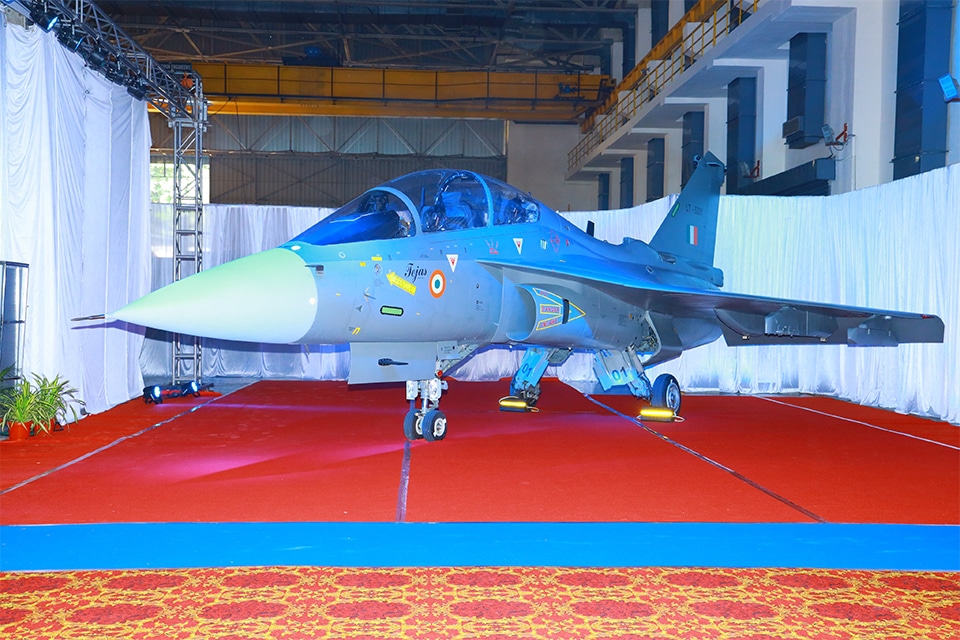Aerospace
First LCA Mark1A fighter aircraft squadron to be deployed at Nal air base

The Tejas Mark 1A fighter aircraft, an indigenous light combat aircraft, is scheduled to be stationed at the Nal airbase in Bikaner, Rajasthan, close to the Pakistani border. According to reliable sources, the first squadron of the aircraft will be stationed at the Nal airbase.
The aircraft are being outfitted with the newest in-country radars and avionics, making them far more sophisticated than the current LCA Mark1 Tejas fighters. It is anticipated that Hindustan Aeronautics Limited will deliver the first LCA Mark1A aircraft to the Indian Air Force by the end of February or early March.
With 97 more aircraft approved by the central government and 83 already in production, large-scale production of the LCA Mark1A fighter jets is now planned. In the next eight to ten years, 220 LCA Mark 1 and LCA Mark 1A aircraft are expected to be brought into service in addition to the forty LCA Mark-1 Tejas fighters.
Hindustan Aeronautics Limited is predicted to produce 24 fighter aircraft annually by 2025, having accelerated its rate of production.
The Tejas Mark 1A fighter aircraft is designed, developed, and produced entirely in the country using more than 65% native parts. Rajnath Singh, the Minister of Defence, chaired the Defence Acquisition Council, which approved the IAF’s upgrade programme for Su-30 fighter aircraft.
According to information obtained, the government expects to spend Rs 1.3 lakh crore on the Su-30 upgrade programme and massive procurement projects. The Indian Air Force is also clear about one thing: it will only possess “Made in India” fighter aircraft going forward, and it will need about 120 indigenous Multirole Fighter Aircraft (MRFA) to match the two squadrons of Rafale fighters to have the necessary capability to counter threats from both fronts.

Aerospace
Boeing Transfers Rocket Stage to NASA, Paving Way for Human Moon Mission

Boeing has achieved a significant milestone by providing NASA with the second core stage of the Space Launch System (SLS) rocket.
This crucial component, crafted at NASA’s Michoud Assembly Facility (MAF), is set to propel the Artemis II crew into lunar orbit, marking humanity’s return to deep space after a 50-year hiatus.
The monumental Boeing-built rocket stage, the largest element of the Artemis II mission, will embark on a journey aboard the Pegasus barge, traveling 900 miles to NASA’s Kennedy Space Center.
Comparison of two legendary aircraft B777x vs B747 aircraft:Click here
Upon arrival, it will be meticulously integrated with other essential Artemis II components, including the upper stage, solid rocket boosters, and NASA’s Orion spacecraft within the iconic Vehicle Assembly Building. This intricate integration process is a vital step toward the eagerly anticipated Artemis II launch, slated for 2025.
“Boeing-built products helped land humankind on the moon in 1969, and we’re proud to continue that legacy through the Artemis generation,” remarked Dave Dutcher, vice president and program manager for Boeing’s SLS program. “Together, with NASA and our industry partners and suppliers, we are building the world’s most capable rocket and paving the way to deep space through America’s rocket factory in New Orleans.”
NASA, Lockheed Martin Reveal X-59 Quiet Supersonic Aircraft:Click here
The delivery of Core Stage 2 marks a significant achievement in the evolution of the SLS rocket. Towering over 200 feet and powered by four RS-25 engines, this core stage, coupled with two solid-fueled booster rockets, will generate a staggering 8.8 million pounds of thrust. This immense power is crucial to launching Artemis II and future missions into the vast expanse of space.
The SLS rocket stands unparalleled in its capability to transport both crew and substantial cargo to the moon and beyond in a single launch. Its extraordinary capacity will facilitate the delivery of human-rated spacecraft, habitats, and scientific missions to destinations including the moon and Mars, ushering in a new era of space exploration.
-

 Travel1 week ago
Travel1 week agoAir India to Expand US Operations with Three New Routes After a Decade
-

 Travel2 weeks ago
Travel2 weeks agoWhy We Should Avoid These Stamps in a Passport
-

 Airlines1 month ago
Airlines1 month agoInvestigations Reveal Fake Chinese Titanium in Boeing and Airbus Jets
-

 Tech4 weeks ago
Tech4 weeks agoChina’s CATL Plans 1,800-Mile Electric Plane Launch by 2027
-

 Airport3 days ago
Airport3 days agoTop 10 Largest Airports in the World by Size
-

 Aerospace4 weeks ago
Aerospace4 weeks agoChina’s Fighter Jets Turn Wings into Autonomous Drones
-

 Airlines4 days ago
Airlines4 days agoAir India Rolls Out A350s for Delhi-New York JFK and Newark Routes
-

 Defence3 weeks ago
Defence3 weeks agoBoeing Enhances Chinook with New Engines and Block II Upgrades at $96 Million







